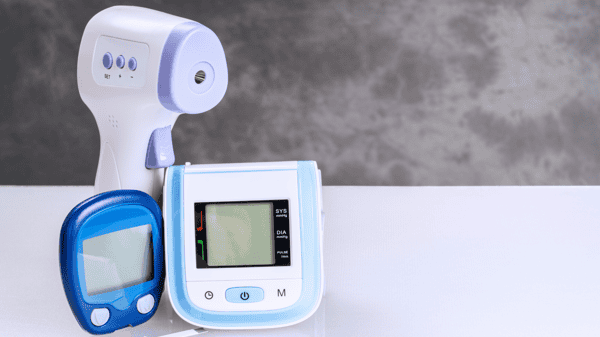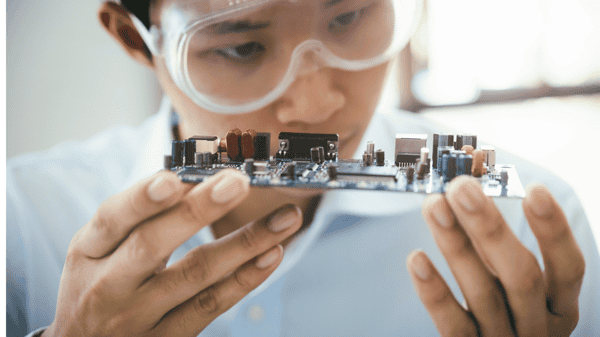Premarket approval is the most stringent regulatory pathway for medical devices and thus can be challenging for first-time entrepreneurs in this space.
What is a Premarket Approval?Premarket approval is the process that the Food and Drug Administration (FDA) uses to determine whether Class III medical devices are safe and effective. This approval is usually not needed for Class I or Class II devices, which are considered less risky than Class III devices. The process requires that the applicant submit sufficient evidence to the FDA that their device is safe and effective for its intended use. Fewer than 1% of all medical devices are considered Class III by the FDA.
🔬 Related: Regulatory Affairs for Life Science Startups

With the signing of the Pure Food and Drugs Act in 1906, the Food and Drug Administration has regulated the development and distribution of products designed for human consumption. Decades later, in 1976, an amendment to the Federal Food Drug and Cosmetic Act of 1938 was passed: The Medical Device Amendment. This amendment was designed to assure the public that a medical device was reasonably safe, and established the three-tier class system that is still used today. The Medical Device Amendment also instituted post-market requirements for medical devices, such as Good Manufacturing Practices (GMP), listing devices with the FDA, and reporting adverse effects.
The establishment of the three classifications for medical devices, Class I, Class II, and Class III also instituted differing regulations based on these classes. Class I and II devices usually do not require premarket approval, but Class III devices do. This is because the Medical Device Amendment defines Class III devices as those which support or sustain human life, are of substantial importance in preventing the impairment of human health, or present a potential unreasonable risk of injury or illness. Class I and II devices present less risk than Class III, so they are not as stringently examined prior to marketing.
The class differences are based on the level of control necessary to ensure the safety and efficacy of the device. Class I requires general controls, Class II requires general controls plus special controls, and Class III requires general controls and premarket approval.
🔬Related: 510(k) Premarket Notification for Medical Devices
For a new medical device to be marketed in the U.S., regulations must be followed that match the device’s classification. Therefore, one of the first things that a company must do in preparing to market a medical device is determining to which class the device belongs. The FDA has classifications for about 1700 generic device types, which can be searched via the classification database, or by looking at the device classification panels. These panels are organized by medical specialty, such as anesthesiology and cardiovascular. If you know the specialty your device fits into, you can look up the corresponding device classification panel and select the device that most closely matches yours to see the classification. You can request the FDA to determine your device classification for you via the Section 513(g) request for information. There is a fee for this, but it is reduced for qualifying small businesses.
If your device is determined to be Class III, then it will require a PMA unless it is substantially similar to a device that was marketed prior to the Medical Device Amendment in 1976, a “pre-amendment device,” and for which a PMA has not been called.

There is no form for a PMA application. Rather, there are elements that the FDA requires in a PMA application and without which they will not review it. The application contents must include the following, unless an omission is justified by the applicant:
Name and address of the applicant
Table of contents including the volume and page numbers of the items referred to in the table
Separate sections for nonclinical and clinical studies
Trade secret/confidential information
Summary of the data and information included in the PMA. This section should be 10-15 pages and include:
Indications for the device’s use, including the intended patient population and the disease or condition for which the device is meant to be used
Description of the device and how it will work
Currently-available practices/procedures that aim to accomplish the same goal as your device
History of the device in other countries or in the U.S. if it has previously been marketed, including if it was withdrawn due to safety or effectiveness reasons
Summary of study data, including descriptions of the objectives of the studies, experimental design, how data was collected and analyzed, and conclusions
Clinical investigations summary should include information specific to clinical studies, such as how subjects were selected/excluded, demographics, etc. Studies that were conducted under an IDE should be identified.
Conclusions drawn from study data including how they show safety and effectiveness as described in 21 CFR 860.7
Complete description of the device, including:
Pictures/illustrations.
Each functional piece or ingredient in the device
Properties of the device that are relevant to its intended use
How it works
Manufacturing process information including facilities, methods, and controls sufficient to demonstrate quality control and good manufacturing practices
Reference to performance standards under Part 514 of the Food, Drug &Cosmetics (FD&C) Act or Radiation Control for Health and Safety Act of 1968 (RCHSA); reference to any voluntary standards developed in accordance with 50 FR 43081. Information on how the device meets these standards and justification for any deviation should be included.
Technical sections including sufficient data and information for the FDA to decide whether to approve or deny the application.
Results of nonclinical laboratory studies including laboratory or animal tests, including a statement that all studies were in compliance with 21 CFR 58, Good Laboratory Practice for Nonclinical Laboratory Studies.
Results of clinical studies on human subjects, including the protocols, number of subjects, number of investigators, study population demographics, length of study, selection criteria, patient complaints, etc. Analysis and discussion of these studies should address how they show safety and efficacy. Report forms must be included for any patients who did not complete the investigation or who died during the study. Each study must include the following information:
Compliance with Institutional Review Board regulations under 21 CFR 56 or determination that the study was not subject to these regulations.
Compliance with the Informed Consent regulation under 21 CFR 50
Compliance with Investigational Device Exemptions under 21 CFR 812 regarding clinical investigation sponsors and clinical investigators.
In the case of all PMA data coming from one investigator, justification showing why this is sufficient to demonstrate safety, effectiveness, and reproducibility of test results.
Bibliography including all published reports whether supportive of the device’s safety/efficacy or not. Applicants may want to include copies of the articles and summaries of each. Any other data pertaining to the safety or efficacy of of the device should also be included here.
A sample of the device and its components if practical and if requested by the FDA. If it is impractical to send a device, the applicant should provide the location where an FDA representative may examine the device.
Copies of proposed labeling for the device, instructions for installation, use, advertising that constitutes labeling, etc.
An environmental assessment and environmental impact statement if the device is not the same type and for the same indication as a previously approved device.
Financial certification/disclosure statement as required by 21 CFR 54
Any additional information the FDA may request.
Other information to incorporate into the application includes pertinent information that is already in the FDA’s files. This can be included by referencing it, making sure that the applicant has authorization when referencing Master Files. If the applicant is omitting any of the above-required elements, they must submit a statement justifying the omissions. If once the PMA application is pending, the applicant acquires new information about the safety and effectiveness of the device, they must update the application. The updates are considered to be amendments to the PMA and must be filed three months after the filing date and any other time they are requested by the FDA. Color additives in devices are subject to Part 721 of the FD&C Act and have to be listed by the FDA for the intended use. Unlisted color additives used in the device may either be submitted as part of the PMA or the applicant can request the FDA list it via submitting a color additive petition to the Center for Food Safety and Applied Nutrition.

The applicant’s cover letter should identify whether the submission is an original PMA, PMA supplement, PMA amendment, etc. and include information needed so the FDA can accurately track it.
PMA’s are submitted electronically, but the cover letter should be printed, signed by the applicant, and mailed to CDRH’s Document Control Center.
A PMA must be submitted in an electronic format (eCopy), with a signed, printed cover letter. A PMA must be signed by the applicant or an authorized U.S. representative. If the applicant does not reside or have a place of business within the U.S., the PMA must be countersigned by an authorized representative who does. The applicant must also provide the representative's name and address.
Your medical device submission package should be sent to CDRH's or CBER's Document Control Center (DCC). The current mailing address for CDRH's DCC and a link to CBER's DCC's mailing address are provided on the eCopy Program for Medical Device Submissions webpage.
The Premarket Submission Coversheet is not required by the FDA, but it can help the Center for Devices and Radiological Health to process your application more efficiently by presenting the administrative elements in a standardized format.
🔬Related: Quality Assurance and Quality Control for Biotech and Medtech Startups
The traditional PMA includes all of the above-described elements and is a lengthy document that requires significant time and effort to prepare. In the traditional PMA format, the entire document is submitted together. This option works best for devices that have already undergone clinical trials.
A modular PMA allows the applicant to submit sections as they are completed, rather than waiting for all elements to be finished. This works well for applicants that are in the preclinical stages of development. The review team will work with the applicant to design a “shell” that outlines the module contents and suggested timelines for submission.
The PDP is ideal for applicants whose technology is well-established in the market. It allows the applicant to come to an agreement with the FDA on what will be needed in order to establish safety and effectiveness before the studies are done. Then the applicant follows the agreed-upon path and submits milestone reports for FDA review at predetermined points. Once the agreed-upon tasks are completed and reviewed, the PMA is considered approved.
The Humanitarian Device Exemption is for devices designed to treat/diagnose a disease that is seen in 8,000 or fewer patients per year in the U.S. The major difference in the application is that the applicant does not have to show effectiveness in the Humanitarian Device Exemption. Additionally, there are restrictions on profit from these devices.
Opportunities and Challenges for Medical Devices in Pandemic Times
Download The Ultimate Guide to Wet Lab Incubators in Southern California, a handbook to assist life science start-ups through the entire decision-making process to find wet lab space.
Download Now